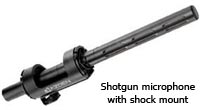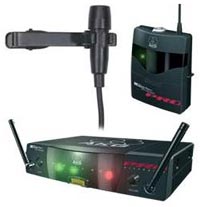 The sound of your film plays a key role in its ability to draw the audience in. In fact, audio is half of your movie, so don’t skimp in this area. Having the greatest visuals means nothing if the sound that accompanies it is not done well. If done properly audio adds another level of depth in your story telling. If done improperly, the audience will immediately think about the poor quality and will concentrate on the problem instead of focusing on the story. This sound and audio training guide will give you some basic information on how to get better sound.
The sound of your film plays a key role in its ability to draw the audience in. In fact, audio is half of your movie, so don’t skimp in this area. Having the greatest visuals means nothing if the sound that accompanies it is not done well. If done properly audio adds another level of depth in your story telling. If done improperly, the audience will immediately think about the poor quality and will concentrate on the problem instead of focusing on the story. This sound and audio training guide will give you some basic information on how to get better sound.
Sound Design
Sound begins well before production ever starts. You need to make sure that you have a plan for how your movie will sound. Will it be a sci-fi? How about a western? The sound effects for these genres are vastly different. You’ll need to focus on the final sound of your movie before you record a single sound.
Consider the mood, the action, the props, the actors. Each of these will help you know what sounds and the quality of those sounds you’ll need to focus on. Spurs on cowboy boots sound quite dissimilar to keys being pressed on a machine shop lathe. Think ahead of how you want your film to sound.
Research films in the same genre as your intended film. What does it sound like? Will you have to create your own sounds? Can you go out in the field and record them? Listen for sounds all around you that sound similar to what you intend to use in your film.
Recording
You’re going to need to have quality recordings to get a quality final sound in your movie. Cleaning up bad sound because you didn’t record it properly on the set will never sound good.
First of all, the number one rule of film sound is this: NEVER USE THE MICROPHONE ON YOUR CAMERA! Why? First of all, most camera mics are meant to give adequate sound for people who are not experts in film making. They make home videos and capture sound as easily as possible, to keep the user from having to do the extra work of hauling around additional equipment.
You’re going to need a quality microphone that you can put as close to the sound as possible. There are two types of microphones that you will likely use; a shotgun, and a lavalier.
Shotgun Microphones
A shotgun microphone is a long slender cylinder with screens on one end. It typically is unidirectional. This means that the microphone picks up sound in one direction. This is beneficial because it filters out sounds you don’t want while focusing on those that you do.
You are very likely to see these kinds of microphones on studios hovering over the actors to get the best recording of their voices possible.
To get the mic in the right place you’re going to need a mount that hold the mic in place, and a boom pole to hold the microphone at a distance. But remember, no one wants to see your sound guy, the boom pole, or the mic in the shot.
Lavalier Microphones
 When you need an up close recording and the shot is too big to get a shotgun mic in the scene, you’re going to need a lavalier. These are the little mics that go under lapels, clothing, in potted plants, etc. and can be wired or wireless. They are small enough to hide in clothing, and produce good sound.
When you need an up close recording and the shot is too big to get a shotgun mic in the scene, you’re going to need a lavalier. These are the little mics that go under lapels, clothing, in potted plants, etc. and can be wired or wireless. They are small enough to hide in clothing, and produce good sound.
Use a little gaffer tape to keep the mic under the clothes. Avoid placing it where it will rub as this generates unwanted noise.
For table or restaurant scenes, hide the mic among or behind the condiments or in flowers where both characters are conversing.
Foley
Foley is the art of creating sounds for film. Typically a foley artist watches the final cut of the film and in a studio recreates the sounds of objects seen on screen. Often these sounds are not even made by the same objects that made the sounds in the movie.
A quality studio will have lots of sound absorbing materials on the walls to prevent echo and have a collections of sound creating materials. A common tool in the foley studio is a wooden box used to record foot steps, thuds, knocking, and more.
The recorded sounds are then remixed back into the audio track of the film and give the other half of your movie its kick.
ADR
ADR, or Automated Digital Recording, is the task of re-recording dialog for a scene when acquiring on set dialog is difficult or impossible, or the shoot is over and the audio did not turn out well. Alternately, you may occasionally need to finesse the dialog a little and while you can edit to avoid showing the mouth movement, you can’t recreate the voice to say what needs to be said. Big scale productions use ADR extensively.
Actors are brought into the sound studio to record their lines again without the extraneous sounds or distractions. Good actors will have the ability to maintain the same cadence as they did in their on set performance, which will assist in matching the new recording to the video.
While it’s a lot of work, the improved sound quality will be well worth it.
Editing
Sound editing is the process of cleaning, trimming, blending, splicing, and massaging audio to improve its qualities.
Cleaning can include removing buzzing or hiss from an audio track. With some editors, you can even control individual frequencies and remove noises while leaving the original sound intact. It is important to avoid using too many of these tools as they can distort the original sound. This can leave your actors sounding like they’re underwater.
Trimming involves selecting portions of audio and deleting them outright. This can be used to remove unwanted sounds before and after the dialog or sound effect you want to keep.
Blending is done by mixing two sounds together on top of each other. Both sounds can be heard when the new clip is played. Make sure to avoid peaking your sound above maximum as this will cause distortion. This can be done by reducing the volume of each sound prior to blending to avoid clipping.
Splicing is the art of joining two different audio clips together. It is wise to adjust the volume of each to match, and to blend a bit as a direct join can result in a noticeable pop or click in the audio.
Massaging audio is a matter of taste and there are countless tools to do it. You can change the pitch of an actor’s voice. You can convert mild sounds into creepy ones. This page does not have the scope to cover any of these tools, but be aware that modern audio editors are powerful and capable of creating almost any sound you can imagine.
Sometimes sounds can be so heavily distorted that it can be unrecognizable from the original. This can be used to great effect when creating audio for genres that require unique and unexpected sound effects.